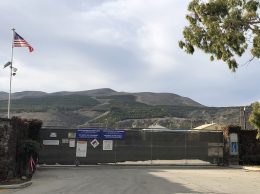Our view: Infill development critical to meeting housing needs
IN THIS ARTICLE
- Editorials Topic
- Editorial board and Henry Dubroff Author
By Editorial board and Henry Dubroff Friday, March 31st, 2017
At a time when hand wringing over the high cost of housing has become more of a political cop out than a panacea, a new study underscores the benefits of infill development.
Next 10, a group that relies on interdisciplinary research from UC Berkeley’s law, environmental and business experts, has cited infill housing for many benefits, including helping California meet its 2030 climate change goals.
A summary of the report suggests that building in infill areas would both reduce household costs and cut greenhouse gas emissions.
Infill opponents don’t like the way that density changes the ‘feel’ of neighborhoods but there really is not a viable alternative in many coastal communities. In expensive markets like Santa Barbara, Thousand Oaks, Ventura and San Luis Obispo, infill is the only option. It’s particularly important in the Santa Barbara area because of the thousands of people who commute via car from Ventura and Santa Maria.
In Ventura County, infill development is perhaps the only solution because voters extended the SOAR land use restrictions that create almost impossible-to-surmount financial and political barriers for developers who must get voter approval to annex farmland into urban boundaries.
In San Luis Obispo, Cal Poly has proposed meeting virtually all of its future housing needs with a series of infill developments — a recognition that the university must take care of its own housing needs.
F. Noel Perry, a businessman, founded Next 10 with the idea of plotting solutions to the housing problem that fit within the state’s recently reaffirmed climate change mandates.
“Where people live can be part of the solution to these challenges,” he said in a statement about a recent Next 10 report called “Right Type, Right Place: Assessing the Environmental and Economic Impacts of Infill Residential Development Through 2030.”
With infill intensive development, the study concluded that California will produce more economic growth and achieve greater annual reductions in greenhouse gas emissions than a “business as usual” approach, which allows urban areas to sprawl into undeveloped land. For consumers, infill means reduced driving and lower utility bills to offset slightly higher rents and/or mortgage payments.
Of course, infill requires policy changes — it may mean providing incentives, more funding for public transit and funding to relocate low income housing residents displaced by new construction. But finding solutions to the workforce housing crisis can’t happen without infill development.
WE OPPOSE PREVAILING WAGE BILL
Even infill developments, for all their benefits, can’t go forward without policies that make them cost effective.
That’s why we join other major news organizations in opposition to AB 199, which would subject all residential construction in California to the prevailing wage. Essentially unionizing labor that until now has been subject to free market conditions may sound like a good idea, but it is no way to solve housing affordability on the Central Coast.
Equally disturbing are reports of moves by the Santa Barbara County Board of Supervisors to dramatically increase developer fees to meet a looming budget shortfall.
By definition, infill housing costs more — land is more expensive, remediation and site preparation cost more and each project must be crafted to be site specific and meet municipal design rules. Piling on higher wages where they’re not required or raising fees for short-term gains just defeat the prospect of keeping workforce housing affordable for middle class families.
Related Articles
 Friday, October 14th, 2022
Friday, October 14th, 2022










